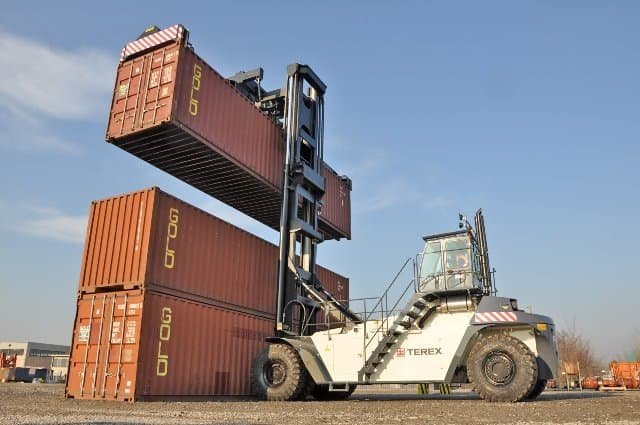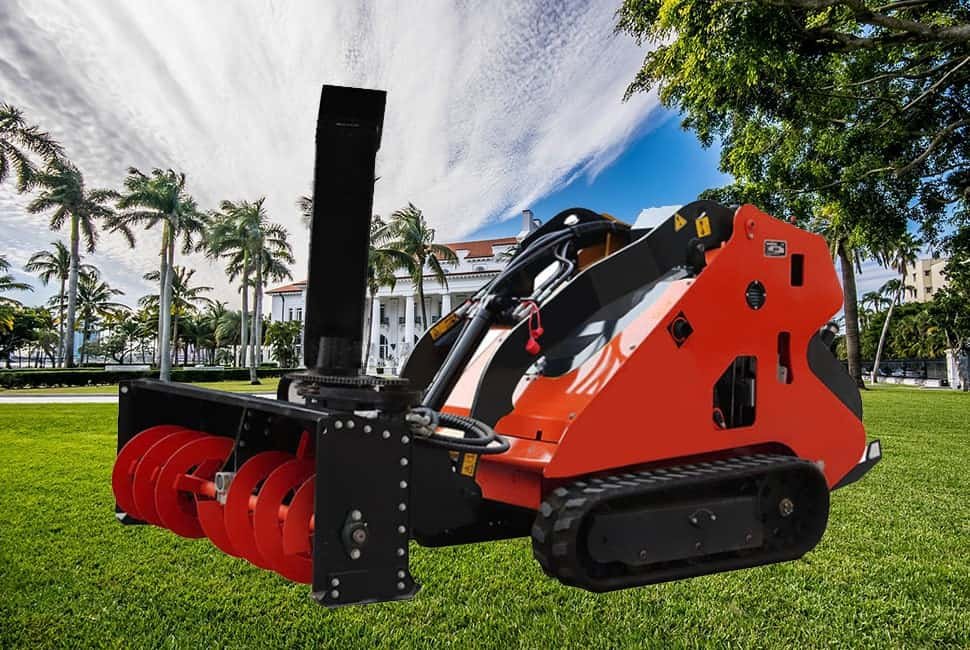Choosing between a skid steer vs forklift can be challenging. Both have their strengths, but understanding their differences is key to making the right choice for your needs.
Skid steers and forklifts are both versatile machines, but they excel in different areas. This article will help you understand their key differences, ideal use cases, and help you decide which one is best suited for your business needs.
Let’s dive into the key differences between skid steers and forklifts to help you make a more informed decision.
What is a Skid Steer and What Does It Do?
Skid steers are compact and versatile machines that are designed to tackle a wide range of tasks in tight spaces. These powerful pieces of equipment are commonly used for digging, lifting, and loading materials, making them indispensable on construction sites, farms, and other work areas where space is limited.
Skid steers can be equipped with either tracks or wheels, each offering unique advantages depending on the terrain and task at hand. Tracks provide better traction and stability on soft or uneven ground, while wheels offer greater speed and mobility on hard surfaces. This flexibility allows skid steers to adapt to various working conditions.
One of the most notable features of skid steers is their exceptional maneuverability. Unlike traditional machines, skid steers use a unique steering system where the wheels or tracks on each side can move independently and in opposite directions. This innovative design allows them to turn within their own length, making them incredibly agile and well-suited for navigating confined spaces. Whether it’s a crowded construction site or a small farm plot, skid steers can operate with ease and precision.

Another key aspect of skid steers is their adaptability. They can be fitted with a wide variety of attachments to perform different tasks. For example, an auger attachment can be used for drilling holes, a grapple bucket can help move heavy objects, and a snowplow can clear driveways and roads. Other attachments include buckets for general material handling, forks for lifting pallets, and brooms for cleaning surfaces. This versatility makes skid steers a valuable asset across multiple industries, from construction and landscaping to agriculture and snow removal.
Skid steers are highly maneuverable and adaptable machines that excel in tight spaces. Their ability to switch between tracks and wheels, combined with a wide range of attachments, makes them a versatile and efficient choice for various tasks. Whether you need to dig, lift, or clear snow, a skid steer can handle it all, making it a must-have tool for many professionals.
What is a Forklift and What Does It Do?
Forklifts are essential machines designed primarily for lifting and transporting heavy loads over short distances. They are commonly used within warehouses, factories, and loading docks, where their compact size and powerful lifting capabilities make them indispensable for handling materials efficiently.
These versatile machines are specifically engineered to carry materials on their forks, making them perfect for stacking goods and moving pallets. Forklifts are particularly well-suited for indoor environments, where their precision and control allow for safe and efficient material handling.
There are several types of forklifts, each tailored to meet specific needs and tasks. Counterbalance forklifts, for example, are equipped with forks at the front and do not require additional support to lift loads. This design makes them ideal for stacking goods in storage areas and moving materials on flat surfaces. Reach trucks, on the other hand, are designed for narrow aisles and can reach high shelves, making them perfect for maximizing storage space in tight areas. Pallet jacks, while simpler in design, are great for moving pallets over short distances without the need for lifting.
While forklifts excel in indoor environments, they are generally less effective on uneven terrain or in outdoor conditions. Their limited versatility in these settings means they are not as well-suited for construction sites or farm work, where more rugged and adaptable machines like skid steers are often preferred.
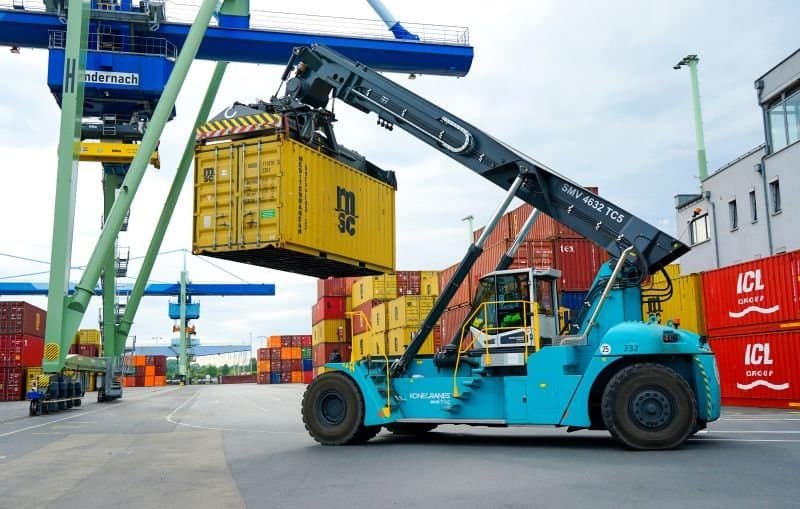
Forklifts are highly specialized machines that play a crucial role in material handling within indoor environments. Their various types, including counterbalance forklifts, reach trucks, and pallet jacks, are designed to meet specific needs, ensuring efficient and safe operations. While they may not be as versatile as skid steers in outdoor or uneven terrain, forklifts remain an essential tool for lifting and moving heavy loads in warehouses, factories, and loading docks.
Skid Steer vs Forklift: Key Differences
Both skid steers and forklifts play crucial roles in material handling, but they are designed for different environments and tasks, making them suitable for distinct applications.
Skid steers are highly versatile machines that can adapt to a wide range of tasks. They are particularly effective in environments that require flexibility and the ability to perform multiple jobs. Skid steers can handle not only material handling but also tasks such as excavation, grading, and trenching. Their adaptability is further enhanced by a variety of attachments, which make them ideal for landscaping, agriculture, and construction. Whether it’s digging a trench, moving heavy objects, or clearing snow, skid steers can be equipped with the right attachment to get the job done efficiently.
On the other hand, forklifts are specialized machines designed primarily for lifting and transporting goods. They excel in industries where heavy lifting and stacking are essential, such as warehouses, factories, and loading docks. Forklifts are built for precision and control, allowing operators to stack materials safely and efficiently. However, their functionality is more limited compared to skid steers, as they are primarily focused on lifting and moving loads. Forklifts perform best on flat, stable surfaces, which are common in indoor environments. While they are not as versatile in terms of terrain, their robust lifting capabilities make them indispensable for handling heavy materials.
Skid steers and forklifts are both essential tools in material handling, but they serve different purposes. Skid steers are highly versatile and adaptable, capable of performing a wide range of tasks with various attachments. They are well-suited for environments that require flexibility and the ability to handle different terrains. Forklifts, by contrast, are specialized machines designed for lifting and stacking heavy materials. They are ideal for indoor environments with flat surfaces, where precision and control are crucial. Understanding the strengths and limitations of each machine can help you choose the right tool for your specific needs.
When Should You Choose a Skid Steer?
If you need a machine that offers flexibility and maneuverability, especially on rough terrains or in tight spaces, a skid steer is the ideal choice. Skid steers are designed to handle a wide variety of tasks, making them incredibly versatile for different environments.
For projects that involve digging, grading, or moving materials, skid steers are particularly well-suited for construction and landscaping environments. They excel in situations where you need more than just a machine to lift and transport materials. Skid steers provide superior maneuverability and adaptability, making them the preferred choice for working in confined spaces or on rough outdoor terrains.
On construction sites, skid steers are indispensable. They can dig trenches, clear debris, and move heavy materials such as dirt, rocks, or lumber with ease. Their compact size and unique steering system allow them to navigate tight spaces and uneven ground efficiently, ensuring that work progresses smoothly even in challenging conditions.
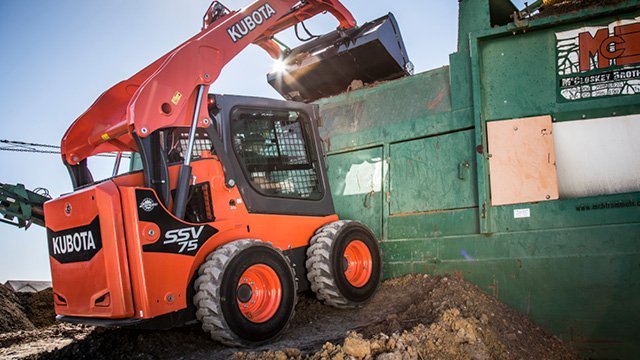
One of the key advantages of skid steers is their ability to be equipped with a wide range of attachments. This versatility allows them to tackle a broad array of tasks. Whether you need a bucket for scooping materials, an auger for drilling holes, a grapple for moving heavy objects, or a snowplow for winter services, a skid steer can be adapted to meet your specific needs. This adaptability makes skid steers a valuable asset across multiple industries, from construction and landscaping to agriculture and snow removal.
If your work requires a machine that can handle multiple tasks, navigate tight spaces, and operate on rough terrains, a skid steer is the perfect solution. Its ability to be equipped with various attachments further enhances its flexibility, making it an essential tool for any job that demands versatility and efficiency.
When Should You Choose a Forklift?
A forklift is your go-to choice when you need to lift and move materials efficiently within warehouses, storage facilities, or other indoor settings.
If your work primarily involves lifting heavy materials and stacking them on pallets, a forklift will provide the necessary precision and power.
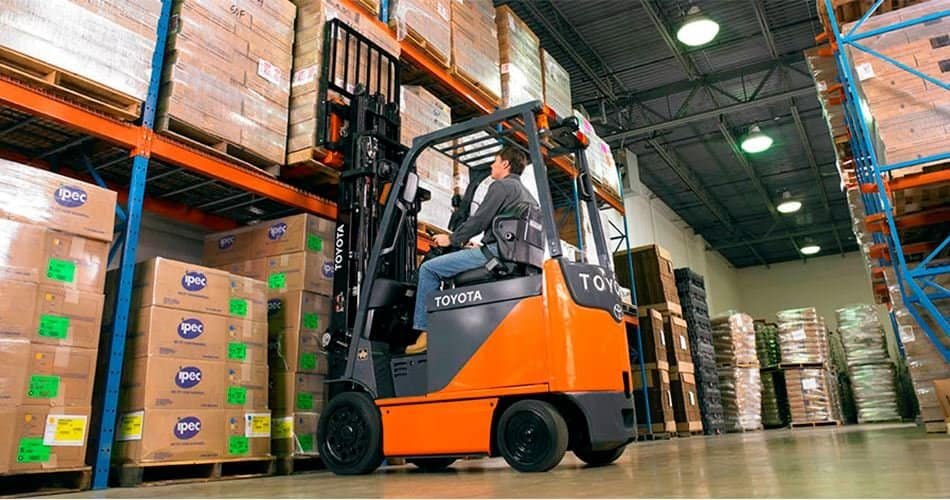
Forklifts are best suited for businesses or industries that primarily deal with lifting and stacking materials. In environments like warehouses or distribution centers, forklifts can quickly move heavy loads, especially pallets of goods, and place them in racks or on trucks. They offer precision when moving materials in confined spaces, where space is at a premium. If your operations involve frequent transport of goods across flat, solid surfaces and don’t require the machine to perform tasks like digging or grading, forklifts are the ideal choice. However, their ability to handle rough outdoor conditions is limited, making them less versatile in construction or agricultural settings.
Which One is More Cost-Effective: Skid Steer or Forklift?
Cost efficiency depends on your specific needs and what tasks you plan to tackle with the machine.
Skid steers are generally more expensive upfront but offer greater versatility. Forklifts may be cheaper in some cases but are more specialized.
When it comes to initial investment, forklifts typically have a lower upfront cost compared to skid steers. However, a skid steer’s ability to perform a wide range of tasks and handle different attachments can make it a more cost-effective option over time, especially if your business needs a machine that can handle multiple functions. A forklift, while less expensive, is limited in its capabilities, mainly excelling in material handling and transport. If your operations require more specialized functions, such as excavation or grading, the added versatility of a skid steer can be worth the extra cost. On the other hand, if your work revolves around warehousing or logistics, the specialized functionality of a forklift might make it the more affordable option.
Summary:
Skid steers and forklifts serve different purposes. Choose a skid steer for outdoor versatility and a forklift for efficient material handling in controlled environments.

